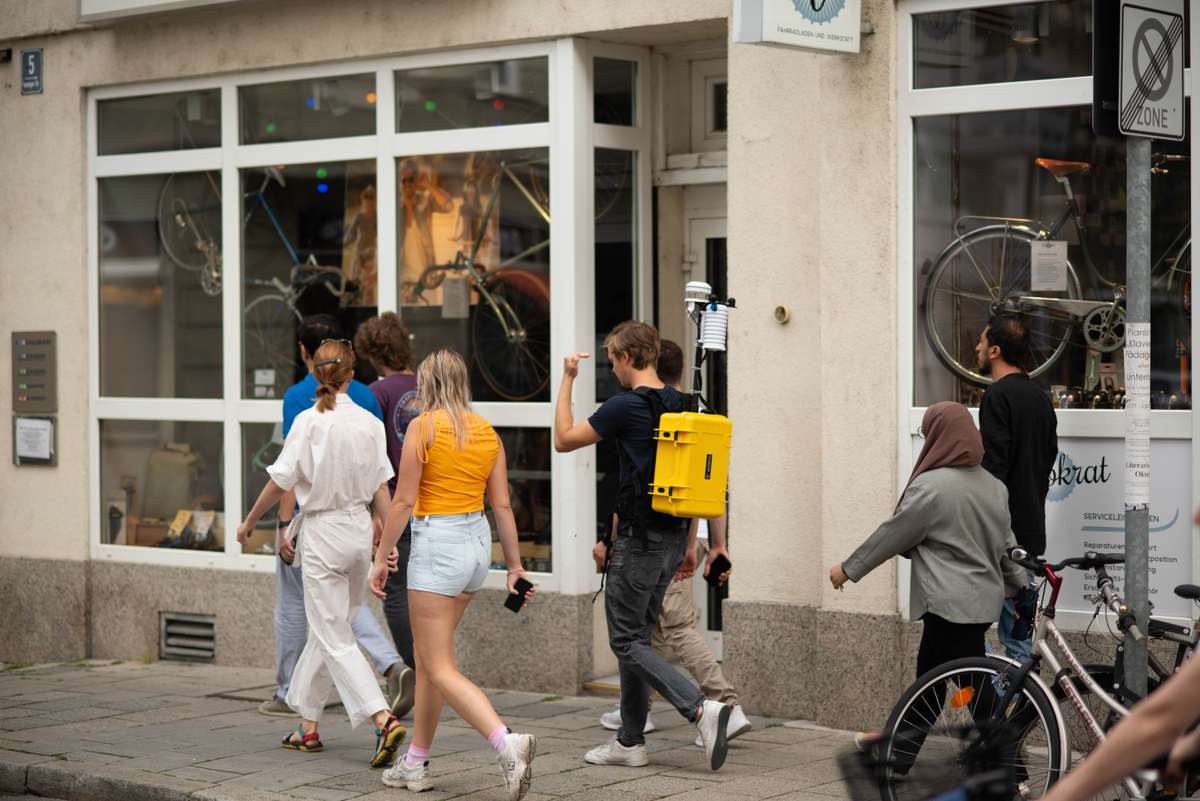Blog - Part 1
By Marie Munzert, Cities Alliance, and Emma Greer, Climateflux*
Cities are getting hotter. More accurately, cities experiencing average summertime highs of 35˚C are expected to triple in amount by 2050. This means that the urban population affected by this urban heat will increase by 800 per cent, which equates to 1.6 billion people.
Why are cities so much hotter? Cities provide a dense form of living – the benefits of which include closer proximity to services and spaces, and resource efficiencies that come from shared infrastructure. However, this dense form of living often comes with a sealed, heat-retaining surface, and at the expense of green spaces and other natural cooling elements.
Local authorities and community organisations are challenged with finite resources to plan, implement and maintain heat mitigation measures in the public realm. Furthermore, the diversity of materials and built forms creates a wide range of microclimate conditions over a relatively small area, making it difficult to generalise heat risk for a city as a whole. This complicates planning endeavours in cities, as one cannot assume that the conditions outside your door are comparable to a street a few blocks over. With what seems like a firehose of emergent situations to deal with, cities are facing so many challenges that it is difficult for them to prioritise where to start.

Urban Heat is an emerging risk that requires much more attention. Extreme urban heat is often called the silent killer because it is much less visible than a hurricane, flood or wildfire, but remains the deadliest of all extreme weathers. While humans can truly be described as a resilient species, our bodies cannot adapt to extreme heat.
The decisive factor is that these impacts are not distributed equally. Women and girls are among those groups most vulnerable to urban heat. Variations in heatwave mortality risk were even estimated to be four to six per cent higher for women in a study of 31 Chinese cities. Women predominantly hold certain social roles, like child- and eldercare, as well as managing the household, for which many walk long distances, fetch water, work outdoors, prepare food over stoves or even open fires.
In a Climate One podcast interview, Kathy Baughman McLeaod from the Adrienne Arsht-Rockefeller Foundation Resilience Center, illustrates how extreme heat causes significant economic losses for women. 'With these extreme temperatures, work has shifted to different times of the day to try to find cooler times. Men can go back to work and women go home to take care of their kids, make dinner, clean up, put them to bed. They can’t go out again and work, and so they are missing an entire shift and the money that comes with it.'
During a session at COP28, Fatimetou Boukhreiss, the Climate Change Programme Coordinator of the Nouakchott Region in Mauritania, highlighted the interconnection between gender inequalities and rising temperatures. She shed light on the disproportionate impact on women who serve as heads of households, underlining the interconnection of gender dynamics and the challenges posed by escalating heat:
When extreme climate events hit, women’s lives are overturned. They cannot reach centres of commerce or go about their work and have to confront these challenges without the necessary resources. The psychological impact of these events are detrimental because women feel excluded, and links with public authorities are eroded.
Boukhreiss advocates for collective local action as the bridge to tackle these unequal vulnerabilities. However, to create sustainable solutions, cities must rethink how their citizens can thrive in outdoor public spaces over the long term, ensuring resilience and well-being in the face of climate-related impacts.

Climate adaptation measures in cities won’t solve or even address these issues unless they are developed in truly inclusive and participatory ways. We must not underestimate the role of behaviour in tackling the urban heat challenge or the importance of engaging local officials and grassroots organisations in building consensus around alternative ways of design and living in cities. Successfully deviating from the status quo requires buy-in from citizens of all walks of life.
As a significant amount of the vulnerabilities to heat exposure faced by women and girls stem from societal and care roles, enabling different behaviours in a city can have a large impact on a population's resilience to heat. Understanding how increased temperature impacts women's urban experiences is the challenge every city has to overcome now.
Munich-based environmental consultancy Climateflux, and UN-hosted partnership Cities Alliance both employ a human-centred approach. To address climate risks in cities and tackle a current gap in development projects, the focus lies on first-person perception data. A form of evidence which can only be obtained through high-resolution surveys and on-the-ground community engagement, with a representative sample of citizens of diverse backgrounds.
Climateflux's Climatewalks initiative is a data-driven and human-centred approach to community-based observation that engages citizens in collecting and analysing high-resolution microclimate data, supporting community-serving organisations to assess vulnerability and climate risk awareness at the local scale and identify priority areas for intervention. Organised as walking or biking tours, Climatewalks take into consideration both the objective and human experience of microclimate by collecting geo-referenced data from a portable weather station as well as outdoor thermal comfort surveys. Piloted in over 16 cities around the world, Climatewalks has become a powerful tool for citizen science and community-led design.
The Cities Alliance Her4Climate tool unveils how women are differently affected by heat through surveys, joint walks and mapping activities. Examining Health and Well-being, Built and Natural Environment, and Governance and Decision-making, the tool reveals climate hazards in cities, their gender implications, and women’s capacity to respond. Exposing flaws in public design affecting water access, safety, and economic opportunities for women, the process provides a foundation for co-creating city development strategies, investment plans, and public spaces. Successfully applied in Nepal and the MENA region, the tool proves vital for inclusive and sustainable urban planning.

In keeping with policy recommendations, such as those made by the 2023 Climate Inequity Report, better data is paramount to understanding the drivers of disproportionate climate risk on vulnerable segments of the population. Effective and gender-sensitive solutions to reducing urban heat require a better understanding of how higher temperatures impact the urban experiences of women and the most marginalised. Consequently, the methods used to gain these insights must change, as most of our cities today are far from being inclusive and climate-resilient.
Upcoming: Blog part 2 - How heat is impacting women's daily lives, health, and job opportunities in the MENA region.
* The opinions expressed herein are solely those of the authors and do not necessarily reflect the official views of Cities Alliance, its members, or UNOPS.

Marie Munzert

Emma Greer

Marie Munzert




